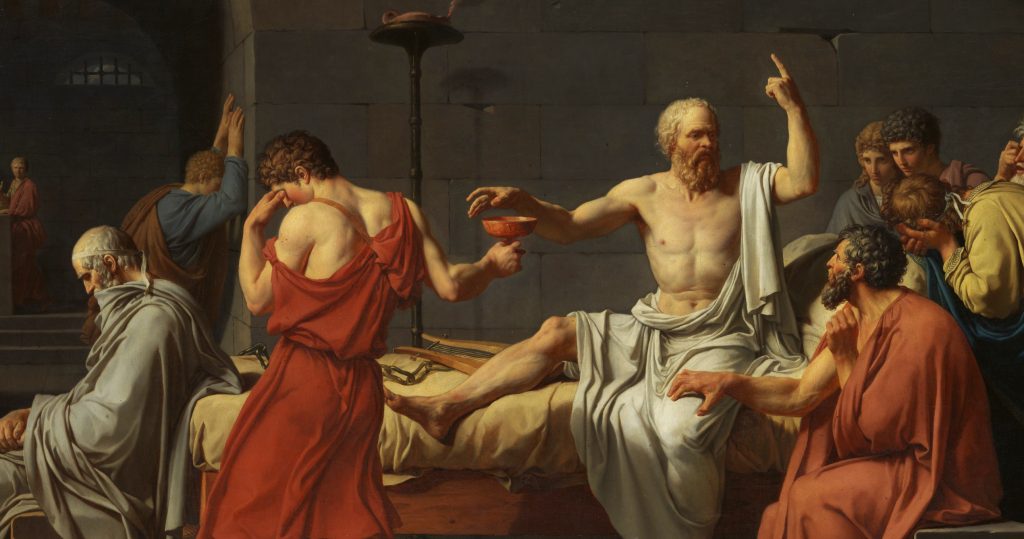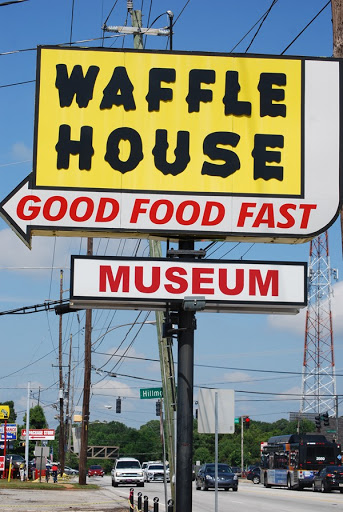This is what you’ve been waiting for, a chance to advance. You’ve prepared for this. And then it happens: they ask something unexpected and you don’t know the answer.
You’re doing your job and having a good day completing your to-do list. Out of the blue the boss calls and asks you about something you had planned on getting to later. But right now, you don’t know and the Boss wants an answer.
Whatever you say, don’t let “I don’t know” mean “I don’t care.”

Knowing the limits of our knowledge is a sign of wisdom and intelligence. Failure to effectively convey those limits is a disaster.
We still study Socrates, who’s wisdom is timeless. The Dunning-Kruger effect is the newest version of what Socrates did over 2000 years ago. Socrates knew the limits to his own knowledge and through constant questioning learned that people who thought they knew, really didn’t.
“I seem, then, in just this little thing to be wiser than this man at any rate, that what I do not know I do not think I know either.”
Socrates is also put on trial for his constant questioning. He serves as his own lawyer and attempts to convey his wisdom to the jury.
They sentence Socrates to death.
This is no accident. “I don’t know” agitates, annoys, and angers. And while we are unlikely to suffer Socrates’ fate, we constantly face professional judgment.
- The Boss asks us about a project or report.
- The Board asks about a hypothetical future problem.
- The interviewer asks if you have any questions.
In each case, the odds of ignorance are against us. They can ask anything; we can’t know everything. Sooner or later, our ignorance will be exposed and we feel we’ll suffer the consequences.
- I won’t get that raise.
- The Board might lose faith in me.
- I won’t get hired.
So how do we turn a blank fiasco into a productive encounter?
There is no shortage of specific examples on how to respond when we don’t know.
- Forbes gives us advice on how to spin our response with Six Ways to Confidently Say “I Don’t Know”
- Fast Company instructs on how to Respond to a Question You Don’t Know the Answer To
- The Muse suggests What to Say instead of “I don’t know.”
The same goes for advice about asking questions.
- Harvard Business Review tells us that the way towards becoming knowledgeable starts with two key questions: “Why” and “Can you give me an example?”
- Forbes tells us the two mistakes in an interview are to say, “Tell me about your company” and “No I don’t have any Questions.”
For both sides of Question and Answer, current advice gives us a list of things to remember, but nothing that connects them. We are left to pick and choose responses like reading from a teleprompter, and people can tell.
People can tell because, parroting words captures only half of the communication picture. Aristotle tells us that effective communication is speaking both words (logos) and conveying emotions (pathos). In the heat of the moment, it’s easy to focus on the words and forget about the emotions. Even in cooler times it is no easy thing – so advice sticks to specific words and phrases, leaving us with only a vague feeling of a feeling as to what we truly need to do.
Philosophy can help here, and 18th century Scottish philosophy holds the key. Seriously.
In the writings of David Hume and Adam Smith we find the essence of what we really need to do when answering any question, every question – including one’s we don’t know.
With questions, we are responding both to a specific request and to the fact that this person cared enough to ask. Something is bothering the questioner, and they have reached out to another person to relieve their discomfort. Whether they admit it or not, a question is an admission that they either cannot, or do not want to, solve this issue by themselves. We are social, not solitary creatures. Asking questions is a way we form bonds with others and become meaningful team players, to be heard by someone else. David Hume identifies the unifying desire all questions seek to satisfy.
“Reduce a person to solitude, and he loses all enjoyment, except either of the sensual or speculative kind; and that because the movements of his heart are not forwarded by correspondent movements in his fellow-creatures.” (Hume EPM 131-2)
We seek understanding, not only of the words but of how we feel about those words. And we know when we find those correspondent movements of the heart because in that moment we know, we feel, that we understand each other.
Ever get stuck in an uncomfortable silence with someone you want to talk to? Asking a question is a good way to get things moving. Why? Because the Q&A pattern is a way for both parties to know the other is listening too. A really good question will get people on the same “wavelength,”1 a pleasant experience where you come to realize you are not alone in your thoughts and feelings. That you are being understood. When this happens, the Q&A transforms from a me and you, into a ‘we’ and ‘us.’
A question is fundamentally an opportunity to form a bond, become a ‘we’ instead of two “I”s. The precise words we choose for an answer is open so long as we keep in mind that our goal is to join with questioner on this problem. This is perhaps the goal of any conversation, but why forget it when it comes to business? Because money is on the line? Maybe, but the way to wealth is working with other people and a question is an excellent opportunity to work with someone else – even when we don’t know the answer.
The skill is making this transformation intentional, and not just leaving it to chance. We can learn this skill. Adam Smith identifies the reason why questions are a team effort, and we can use this insight to improve how we respond.
A question is a complaint, someone complaining that they don’t know. And, whether they realize it or not, underneath asking us for specific information, they are asking us to share in their complaint. This is the nature of the bond, and Smith tells us why this is so very important.
“It is to be observed accordingly, that we are still more anxious to communicate to our friends our disagreeable than our agreeable passions, that we derive still more satisfaction from their sympathy with the former than from that with the latter, and that we are still more shocked by the want of it.” (TMS P1,S1,C1)
People like to share their passions. It’s enjoyable to share the things we like and pleasant when others like the same thing. But often, that’s not necessary. I can share my good time playing pool while you share yours of having a good run that morning. We don’t really need to agree on the specifics when we share our joys. You don’t need to like pool and I don’t need to like running. It helps if we like the same things, but we can still form a bond by sharing different things we enjoy. Complaints, on the other hand, are a whole different experience.
People like to complain, and we like to complain in company that shares our perspective about the specific thing we are complaining about. We feel the urge to express our disagreeable passions, and the need to have those feelings verified and shared by others. Misery loves company … and despises critics. It is with sharing disagreeable feelings that we make allies and enemies.
Think of it, why is the proverb “The enemy of my enemy is my friend” and NOT “The friend of a friend is my friend”? It is agreement of what disturbs us that draws the line.
Questions are complaints. We ask a question when something is missing, and it bothers us enough to actually express that feeling. We care about what we are asking because we are uncomfortable with what we don’t know. We’re not looking for someone to disagree with us. We are looking for someone to help alleviate the unknown. The questioner
“comes from considering the object, to observe how I am affected by it, according as there is more or less disproportion between his sentiments and mine, I must incur a greater or less degree of his disapprobation: and upon all occasions his own sentiments are the standards and measures by which he judges of mine.” (TMS1,1,3)
When someone asks you a question, they want to see if you care about the matter like they do. It is not answering the specifics of the question that matter so much as matching the feelings of the person who asks the question. And it is their feelings that establish the benchmark for a good answer, not yours.
- The Boss, asking about the report, is asking about whether you cared enough to either know its contents or ensure its work-flow progress. What the report says, or exactly where it is, are both secondary to whether you care enough to know or find out.
- The interviewer, asking if you have any more questions, is not asking whether your list of questions has been exhausted. She is asking “did you care enough to find out anything that we wouldn’t normally cover in an interview”?
- The Board asking hypothetical questions isn’t asking for specific solutions. They might not know a solution if it bit them. They are asking whether the CEO cares about the company the way they do: “I’ve been thinking about the possibilities … have you?”
A good answer forms a bond by sharing in the same level of concern as the person asking the question.
By itself, “I don’t know” is neutral and conveys no sentiment of caring. It is the emotional opposite of a question. Alone, it is an indication that you neither care about the issue nor the questioner’s interest. Attentive people usually try to correct for the former but often not the latter. In the moment we get lost in the weeds. We focus on answering the particulars of the question and neglect the main task – answering the person who asked.
It’s not the fact that’s at issue, the fact of not knowing, it’s the response. “I don’t know” lacks the same sentiment as the questioner. “I don’t know” is neutral. It conveys neither approval nor disapproval – it conveys no sentiment, and that’s the problem. The questioner cares about the issue, her question is evidence of that, and your response needs to be foremost a recognition of that importance. What facts you know are secondary.
The facts are secondary? Yes. Consider, next time someone you know asks a question you do know the answer to and just give them the bare answer, nothing else. A question is a chance to engage, and a blunt, even terse, answer indicates a lack of desire to engage. Worse, answer the question and then walk away. Walking away is rude, not because you didn’t answer but because you failed to consider the most important part of the question – someone reaching out to you with something they care about. You’ve answered the question but destroyed any hope of forming a mutual bond.
The same pattern holds for asking good questions.
Forming a good question is not about the specific thing you are asking about. A good question is one that shows you care as much as the person you are asking. You are complaining to them that you do not know and giving them the chance to share in that complaint and form a bond by relieving it.
Who determines whether it is a good question? The listener, the receiver, the person to whom you are asking the question. What explains a good question from a bad one? Whether your question matches their level of concern.
- HBR’s two questions both tap into what the other person finds important. Asking someone who is knowledgeable “why” or asking for an example indicate you are interested in something they care about. Ask a person about their passion or hobby and see for yourself their reaction.
- In the Forbes’s example, poor interview questions convey a total lack of interest. Formulating good questions takes time and research. It’s a skill and takes work. Not having a good question simultaneously conveys the interviewee doesn’t care and they are not willing to work. That’s a high impact mistake, and it’s easy to correct – if you really do want the job.
The question you hear is not what you are being asked.
What you’re really being asked, in any question, is to work with someone on a problem you mutually find important. So, while you’re thinking about answering what they said, take a moment to judge why they asked it: This person needs to work with you. This is your chance to show them you want to work with them. Remember a question is a complaint people want you to understand, first-and-foremost, by sharing their level of concern. Your biggest enemy is perceived indifference.
Whatever you say, don’t let “I don’t know” mean “I don’t care.”




